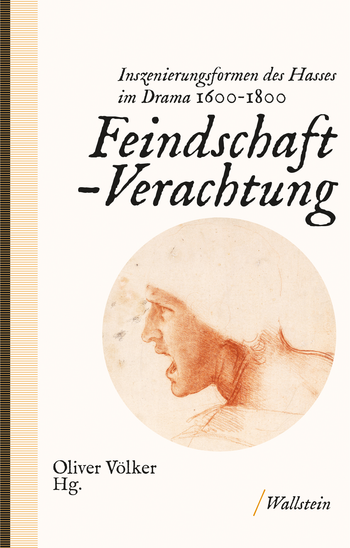


Die schurkische Zentralfigur in Christian Felix Weißes „Richard der Dritte“ (1759) ist als eine Ikone des Hasses erkennbar. Weißes Stück bietet zwei Rezeptionsebenen an. Einerseits behandelt das Drama die Tugendhaftigkeit Elisabeths (ihre moralische „Stärke im Unglück“). Andererseits bleibt Richard die Hauptfigur: im Zentrum steht der Erzbösewicht. Es ergibt sich eine doppelte Motivation: das Stück behauptet eine christlich-pädagogische Intention und bietet
zugleich die Attraktion eines theatralischen Spektakels dar, in dem ein „Wüterich“ seine Bösartigkeit zur Schau stellt. In seinen Kommentaren zu Weißes Stück führt aus, dass die pädagogische Dimension bei Weiße scheitert. Weißes Drama ist für Lessing eine bloße Belustigung der Massen durch Gewalt und Sprache des Hasses. Lessing setzt dagegen auf die Erziehung zu „Furcht“ und „Mitleid“ als Medien der Verbesserung der Menschen durch das Theater. Der Umbruch vom (barocken) Trauerspiel zum bürgerlichen Trauerspiel, vom Spektakel des exzessiven Hasses zur Mitleidsästhetik vollzieht sich in der Mitte des 18. Jahrhunderts so in der Auseinandersetzung über die Figur des Schurken.
The contribution shows how the debate about the role of hatred and evil brought about a transformation of drama in the 18th century. The villainous central character in Christian Felix Weiß's Richard the Third (1759) is recognizable as an icon of hate. Weiß's play offers two levels of reception. On the one hand, the drama deals with Elizabeth's virtue (her moral “strength in adversity”). On the other hand, Richard remains the main character: the arch-villain is at the center. This results in a double motivation: the play asserts a Christian-educational intention and at the same time offers the attraction of a theatrical spectacle in which a “rageaholic” displays his malice. In his comments on Weißes Stück, Lessing argues that Weiß's educational dimension fails. For Lessing, Weiß's drama is merely entertainment for the masses through violence and the language of hate. Lessing, on the other hand, focuses on educating people to feel “fear” and “compassion” as means of improving humanity through theater. The transition from (Baroque) tragedy to bourgeois tragedy, from the spectacle of excessive hatred to the aesthetics of compassion, took place in the mid-18th century in the debate about the figure of the villain.
Oliver Kohns, geb. 1974, ist seit 2019 Assistant Professor am Institut für Germanistik an der Universität Luxemburg. 2006 Promotion in Allgemeiner und Vergleichender Literaturwissenschaft in Frankfurt am Main, ab 2011 als Attract Fellow Leiter des Forschungsprojekts „Figurationen des Politischen“ an der Universität Luxemburg. Forschungsinteressen: Literaturtheorie, Politik und Ästhetik, die Figur des Schurken im Drama
mehr